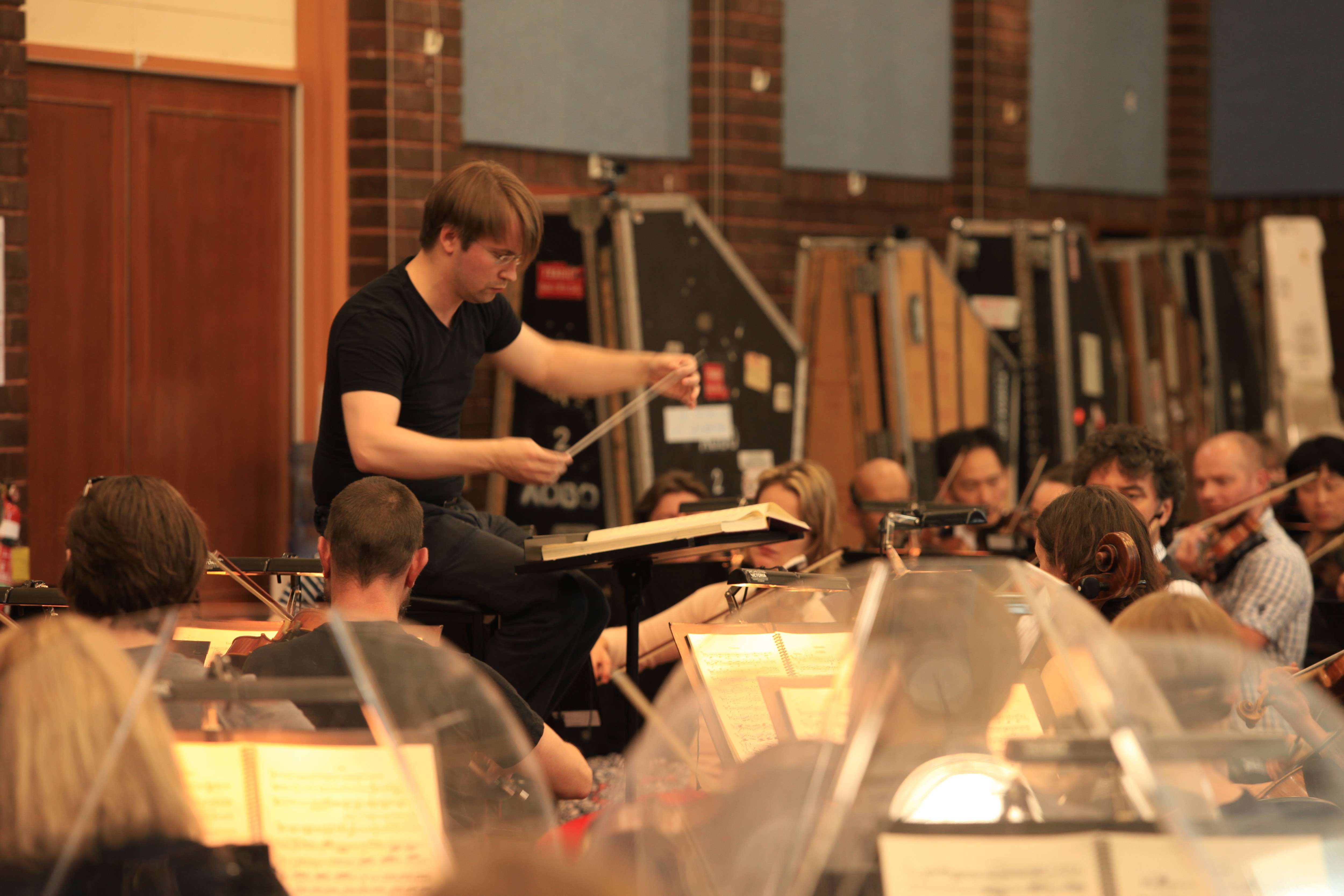|
Back
Opera Australia Ring preview: Part III
11/15/2013

P. Inkinen (© Aidan Cirrigan)
Siegfried (seen at the 13 November dress rehearsal ahead of the 25 November opening) is arguably the most difficult to stage of the Ring operas.
Acclamation for the orchestra grows with each opera and there were standing ovations before the performance commenced.
In contrast to the previous two works, the set is glaringly white. We see an art deco proscenium arch of a theatre capped with lights that is pushed to the apron of the stage. Within is a contemporary apartment: Mime’s forge is crammed into a makeshift kitchen with refrigerator, microwave and modern utensils; the wall is plastered with childlike drawings of animals and dragons; bunk beds and ragged furnishings suggest a hand-to-mouth existence.
Mime (Graeme Macfarlane) and Siegfried (Stefan Vinke) are bickering. Siegfried is a petulant youth, draping himself over furniture, throwing his drawings and toy dragon about for Mime to collect, and hurling the microwaved meal to the floor. We relate to the modern dress of jeans and rugby tops worn by both. This is the world of humans which Mime tolerates to secure the gold and ultimate power. He loathes this mundane existence and wheedles and connives to persuade Siegfried if not to love him then to remain with him.
Wotan as The Wanderer enters bare-chested and ragged; his torn fur coat now filthy, hair lank and eyes hidden behind sunglasses. He toys with the underling Mime, deriding him but causing the realisation that Siegfried will reforge the sword and kill the dragon. The animosity between parent and child reaches open hostility as Mime reveals his truly evil nature and his determination to secure the riches of the world.
In tempo with the orchestra, Siegfried reforges the sword, Nothung, in the blazing white light of this world Mime has constructed. He longs to break free, and in joy at his newfound power he slashes at the rear wall permitting shafts of blinding light to penetrate.
In Act Two, a massive projection of Fafner (Jud Arthur) enlarging himself into the dragon stares menacingly into the void. As the curtain rises, we are transported to the other side of the proscenium. It is dark and a lone figure sits at a makeup desk. It is Fafner semi-naked. His grimacing and distorted face is projected monstrously onto the rear wall while he applies white-face paint, slashes his mouth with red and strikes out his eyes with black. The overall effect is at once theatrical and imposing but curiously related to the real world and humans. Are we the ones who have become the dragon? Are we responsible for hoarding of riches and destruction of the planet?
The proscenium revolves and, through the hole cut by Siegfried, we are outside the dragon’s lair where Alberich (Warwick Fyfe) bides his time plotting and scheming - and where he meets Wotan.
Siegfried’s meeting with the Woodbird (Taryn Feibig) is again related to humans and our world. She is a regular girl who picks at food from Siegfried’s backpack and dances around him. This ordinariness extends to the killing of the dragon when Siegfried casually steps into the lair and strikes one blow of which we see little other than a spray of red confetti. The true horror becomes apparent when Fafner emerges into the glaring light. Jud Arthur is entirely naked other than grotesque body paint showing that he has been slashed from shoulder to groin and there is no alternative other than to focus on blood and viscera as he dies. Realising Mime’s true intentions Siegfried contemptuously plunges his sword into the dwarf and then arranges the bodies into a seated tableau. He is now free to follow the Woodbird to his destiny and Brünnhilde.
Director Neil Armfield brings disconcerting elements of normality to the violence. We expect huge theatrical gestures in this scene and what we get is ‘ordinary’, everyday stabbing and maiming. It is the aftermath, the witnessing of the effects of the violence, which are truly shocking.
In the third act Wotan lies prostrate under the proscenium; writhing in realisation that his time is ended, he foresees an inevitable path to destruction of the gods. Earth mother Erda is in a wheelchair, assisted by an attendant in funereal black (Deborah Humble) who sings the role while the seated, aging,infinitely frail character mimes. Distraught, Wotan bars the way to Brünnhilde but Siegfried, a mere mortal dressed as any and every man might be, confronts him and destroys his staff with a single swipe.
The final scene is beautiful in its minimalism: under the arch, Brünnhilde rests in a plastic-covered sarcophagus and far back in the blackness, a white horse stares out. When Siegfried approaches the arch release a huge gold sequinned curtain representing fire. On the open and deep stage, this simple effect was sensational. Siegfried cuts her free and in glorious unity of voice the two sing the great duet which realises their love, humanity, mortality and hope.
As in the previous instalments, the response was rapturous. Call after call brought the cast to the front of the stage.
Gregory Pritchard
|